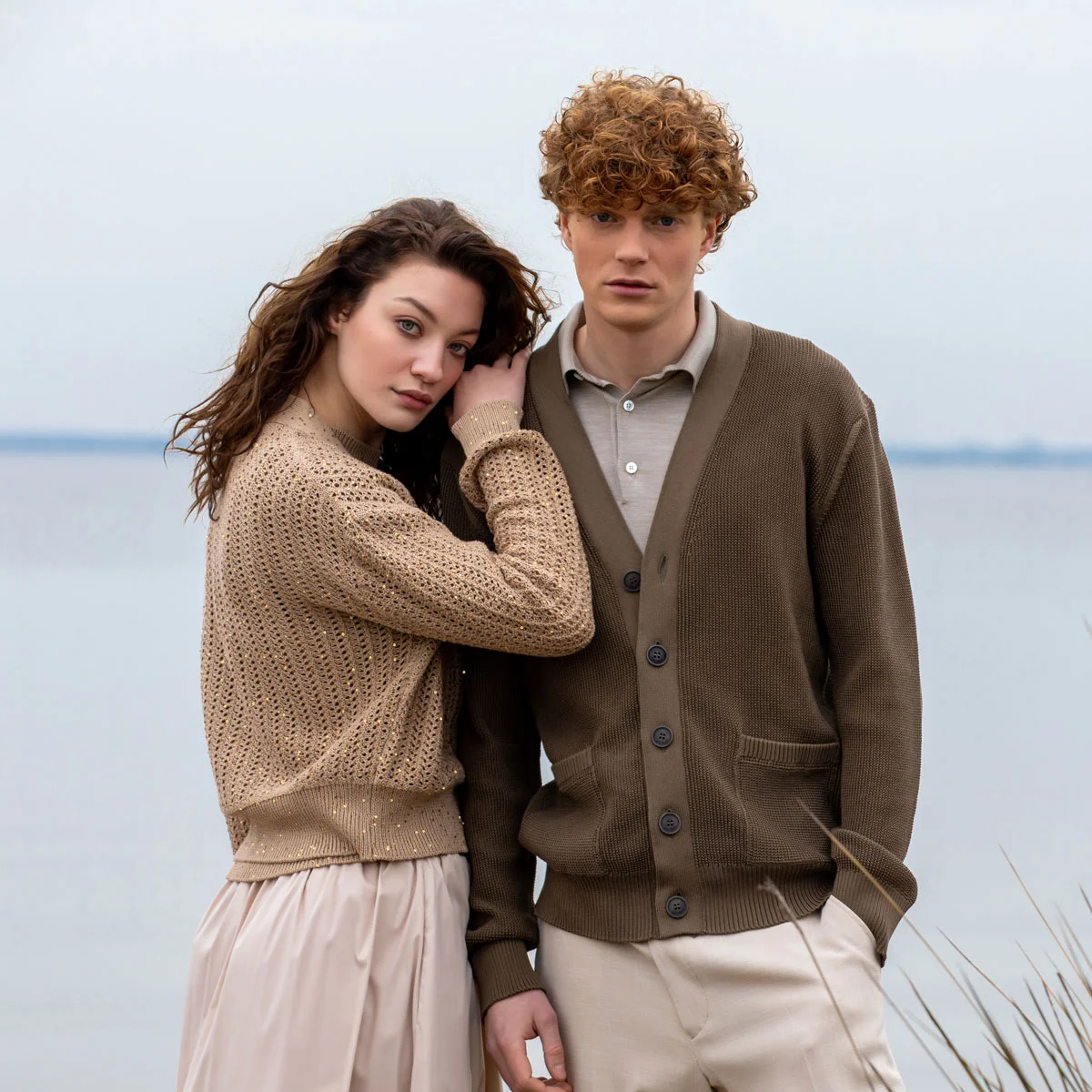The sahariana is an iconic outerwear piece with a rich and fascinating history rooted in the military and colonial fashion of the 19th and 20th centuries. Originally conceived as a practical and functional jacket for warm climates, it was adopted over time by explorers, military personnel, and eventually the fashion world.
Also known as the "bush jacket," the sahariana takes its name from the Sahara, the vast African desert. Its history begins as attire for European military officers, particularly British, stationed in African and Asian colonies. Initially designed to be practical in hot and dry environments, it was made from light and airy fabrics like cotton and linen, and featured numerous pockets for carrying essential equipment. Chest, hip, and sometimes sleeve pockets made it easy to access maps, compasses, ammunition, and other tools.
Evolution and Popularity
In the 1930s and 1940s, the sahariana was also adopted by civilian explorers and adventurers, becoming a symbol of discovery and adventure. Its practicality and casual style soon attracted a broader audience. Cinema and literature of the time contributed to its "iconization": by associating the garment with the most charming and adventurous characters on the big screen (Humphrey Bogart, Clark Gable, and Gary Cooper), they consecrated the sahariana as the emblematic piece of a lifestyle. Meanwhile, adventure literature depicted protagonists facing challenges in exotic lands while wearing saharianas, further spreading this image. The combination of cinema and literature made the sahariana a lasting symbol of boldness and the spirit of exploration, captivating the public and increasing its popularity.
The Yves Saint Laurent Revolution
In the 1960s and 1970s, the sahariana transformed from a functional garment to a fashion icon thanks to Yves Saint Laurent, who introduced a revolutionary version in 1968 with laces instead of buttons and a metal grommet belt, immortalized by top model Veruschka. Saint Laurent adapted the typical French uniform worn in Algeria for the female body, making it a glamorous and versatile garment, presented in both Haute Couture and prêt-à-porter. His tailoring work streamlined the jacket's structure, maintaining distinctive elements such as the "V" neckline and four applied pockets, creating a complete outfit with flared trousers. This piece became a symbol of spring, surpassing its connotations of travel and adventure.
Style Icons and Pop Culture
Over the years, the safari jacket has been worn by numerous celebrities and style icons, solidifying its position in fashion. These include Ernest Hemingway, known for his adventurous spirit, and the cinematic character James Bond, who made it an emblematic piece in his films. Stars like Jacqueline Kennedy and other entertainment celebrities have also made it an essential and desirable garment.
Modern Versatility
Today, the sahariana continues to be an iconic and versatile piece highly appreciated by both men and women. Modern designers incorporate it into their collections, maintaining its functional characteristics while adding contemporary elements or adapting it into various forms: transforming it into a "one-piece" ranging from dresses to jumpsuits, and lightening it to be worn as a blouse or as part of a coordinated set. Perfect for the mid-season, the sahariana proves to be a trendy piece even in its vintage versions.
The Cains Moore Sahariana
For the spring/summer 2024 season, we pay homage to this extraordinary style icon by reinterpreting it in the Cains Moore style. We have created our version of the safari jacket entirely in knitwear.
This tricot jacket, made of the finest Makò cotton, is enriched with precious and refined details resulting from meticulous workmanship by our expert knitters, requiring high precision and experience through numerous steps.
Discover our knitted sahariana.

